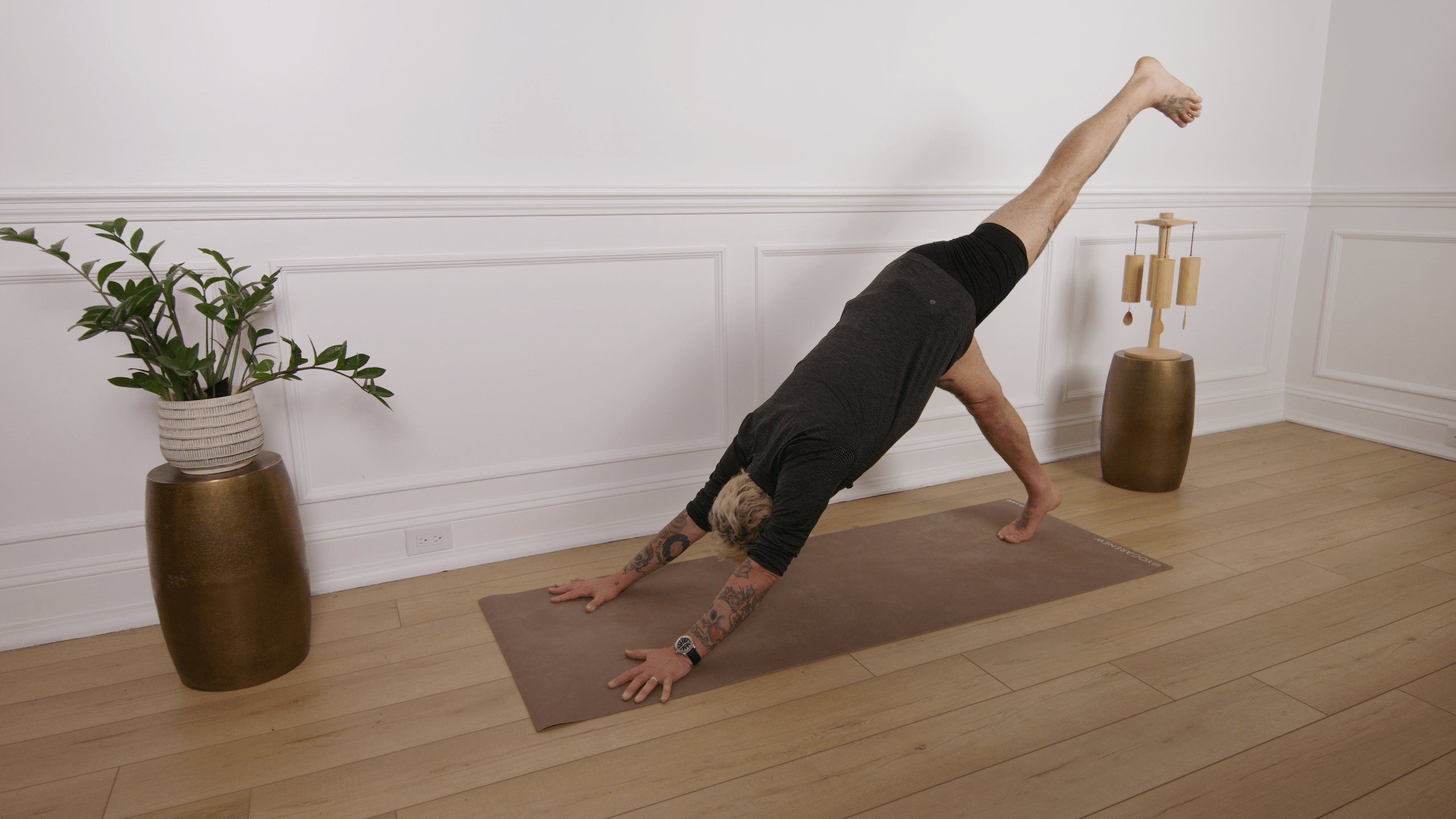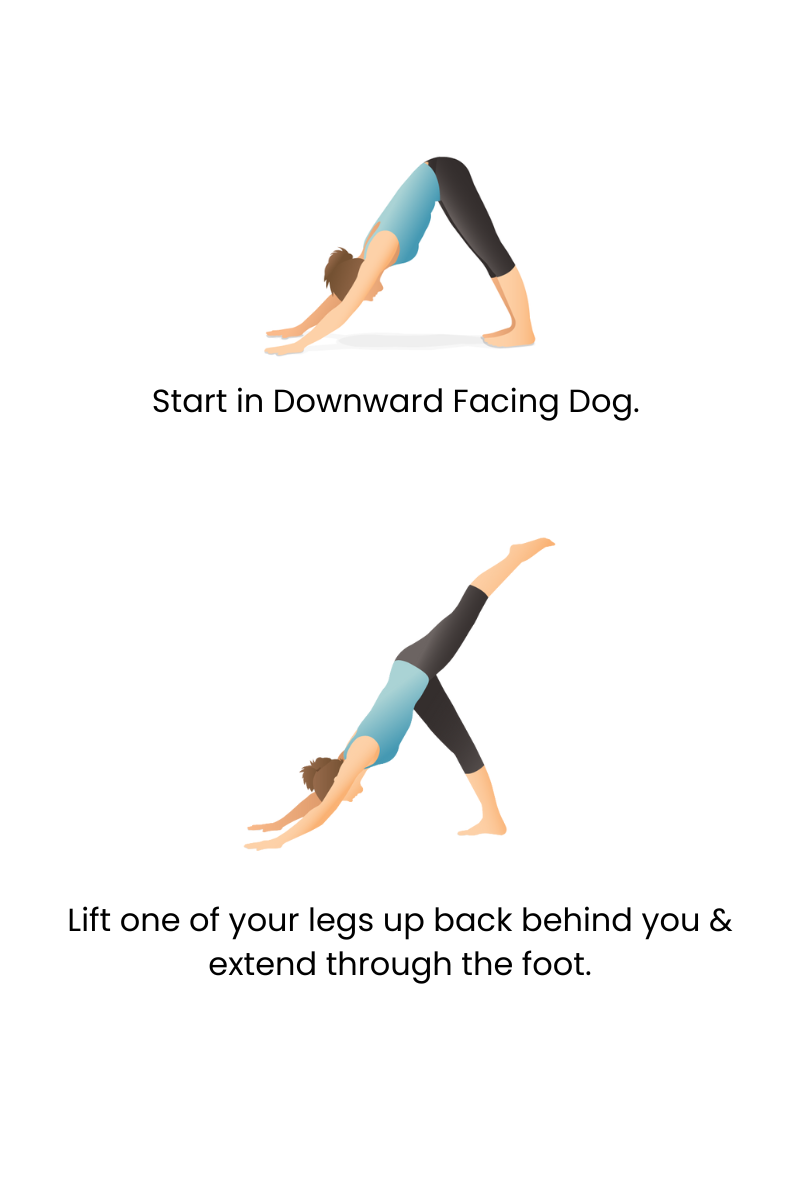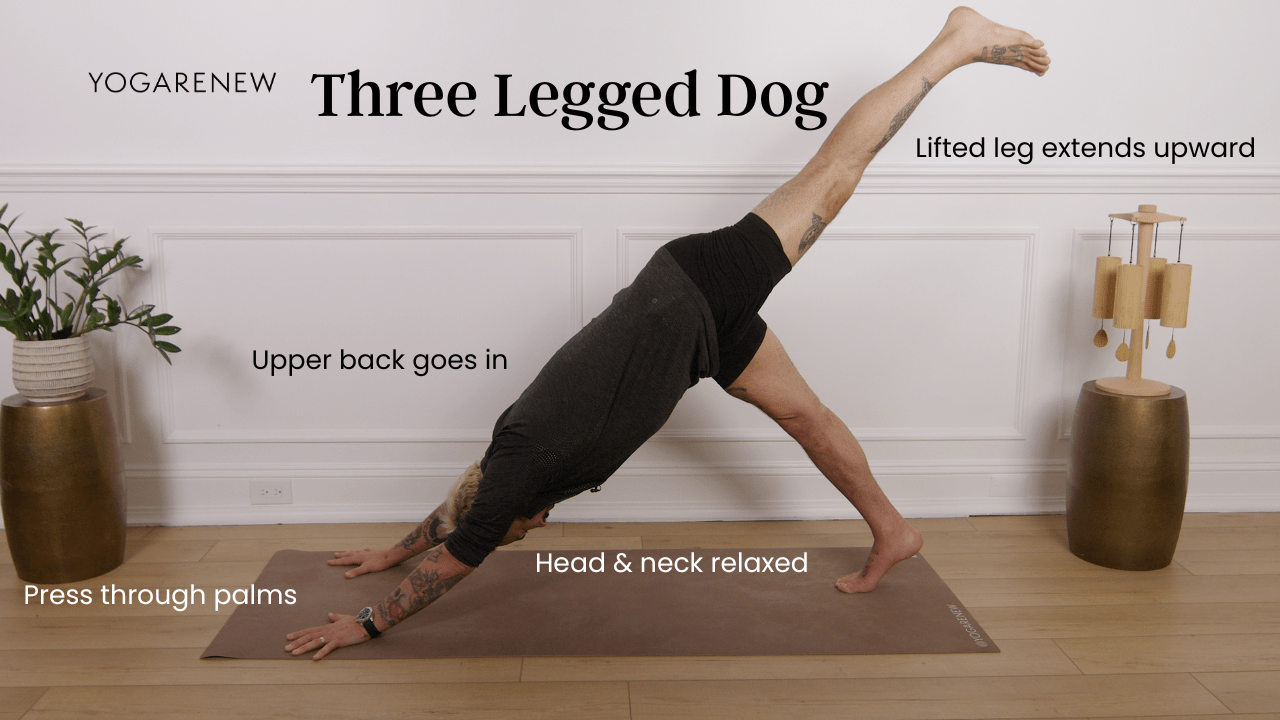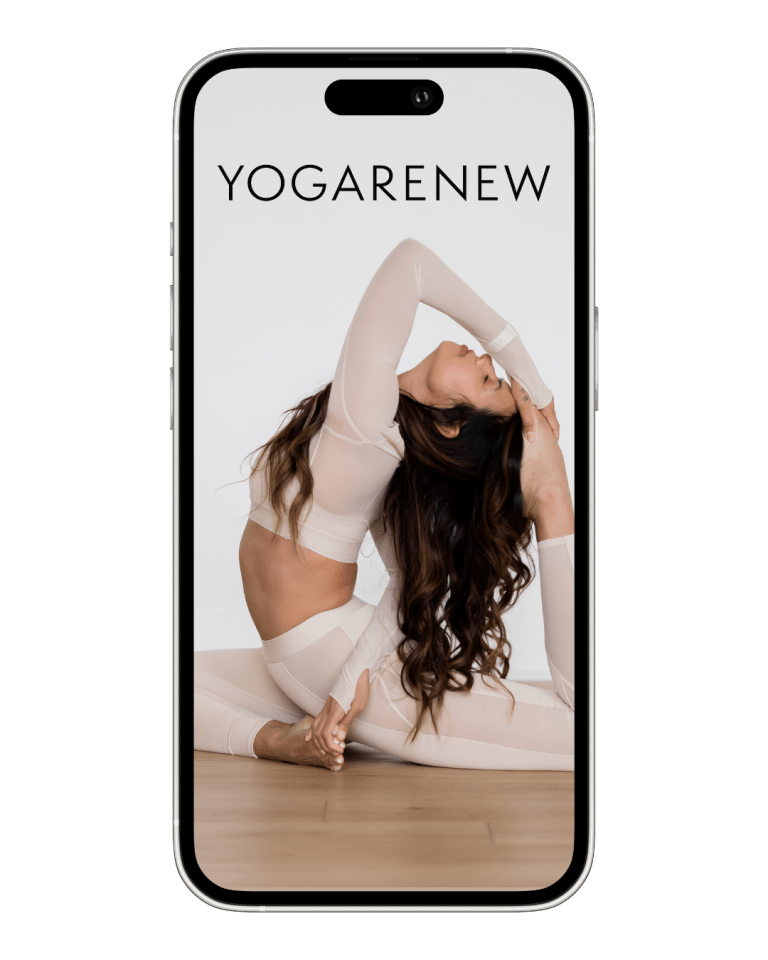What is Three Legged Dog?
English Name: Three-Legged Downward Dog
Sanskrit Name: Tri Pada Adho Mukha Śvānāsana (pronounced tree PAH-dah AH-doh MOO-kah shvah-NAH-suh-nuh)
Category: Inversion, Strength, Standing, Intermediate

English Name: Three-Legged Downward Dog
Sanskrit Name: Tri Pada Adho Mukha Śvānāsana (pronounced tree PAH-dah AH-doh MOO-kah shvah-NAH-suh-nuh)
Category: Inversion, Strength, Standing, Intermediate
Three-Legged Dog, or Tri Pada Adho Mukha Svanasana, is a variation of Downward Facing Dog in which one leg is lifted toward the sky. This energizing posture builds upper body strength, stretches the legs and hips, and challenges core stability and balance.
It is commonly used in Vinyasa flows as a transition or prep pose for hip openers, standing balances, or arm balances like Wild Thing and Eka Pada Koundinyasana.


Three-Legged Dog is a strong, graceful expression of movement and control. It blends strength, mobility, and flow—awakening the body from the fingertips to the toes. As a versatile pose, it builds coordination and transitions smoothly into a variety of shapes.
Whether you’re using it to power up your Vinyasa, stretch out tight legs, or prep for arm balances and splits, this pose teaches balance, focus, and full-body engagement.
Both are valid—it depends on your intention. Keep hips square to build core strength; open them to stretch and prep for deeper poses.
Totally fine! It’s about length, not about the heel touching. Over time, flexibility may improve.
Yes. You can bend the knee to open the hip or reduce intensity.
Yes, with modifications. Keep it simple and focus on control over height.
Hold for 3–5 breaths to build strength and awareness, or longer if you’re using it restoratively.

Explore classes & pose tutorials for any style, format, duration or experience level with a free account in the YogaRenew app. Or subscribe and gain access to workshops, live classes and more.